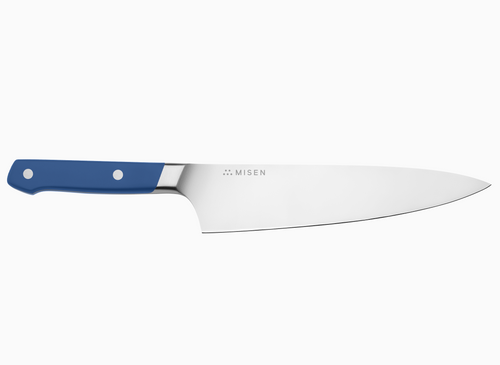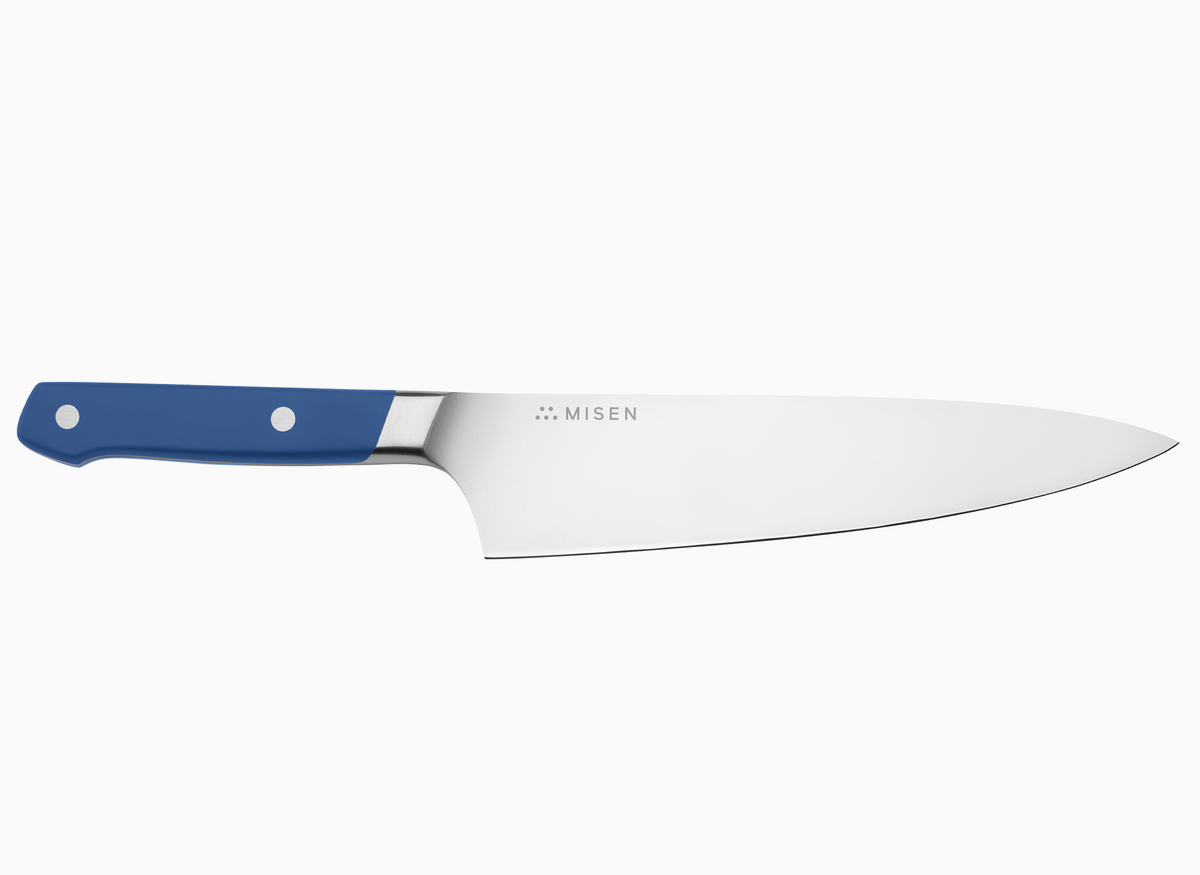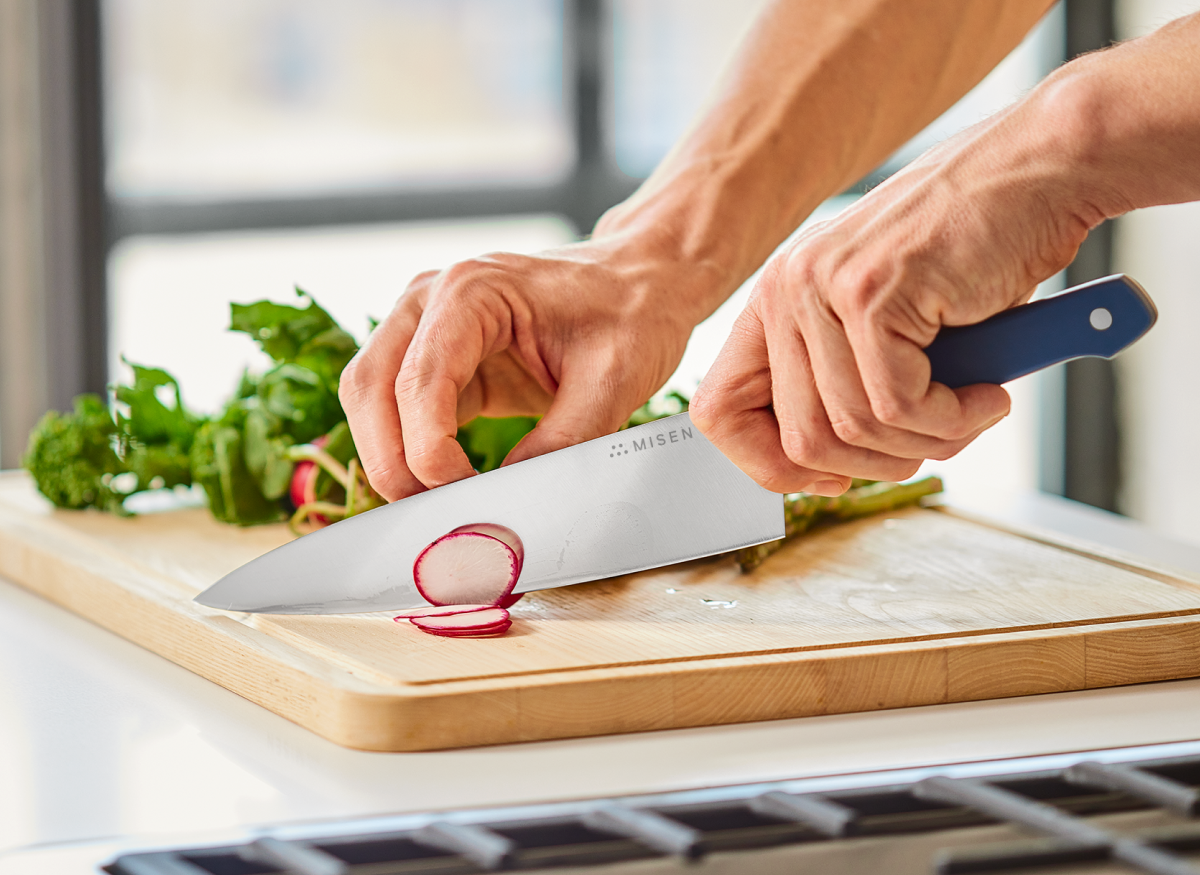4 Types of Pans and Pots Every Cook Needs
 Most professional kitchens rely on stainless steel pans.
Most professional kitchens rely on stainless steel pans.
- Having the proper pot or pan for each dish makes the cooking process easier.
- When choosing cookware, consider the size, capacity, material, and overall construction.
- Each type of cookware has its own heating and cleaning method.
Cooking pans and pots are like shoes. Your shelves are full of them, but only a few really get used. These are the ones that don't even get put back in the cupboard, going straight from use to use.
This is common for both footwear and cookware. You naturally slip into the most comfortable, well-worn flats, and you automatically grab your trusty, patina-seasoned pans and pots.
With the weight of so much good food resting on so few pieces of cookware, it's good to know which ones you need in the kitchen. Whether you’re building a new set or cutting down your current collection, here are the 4 types of cookware you need to whip up any delicious dish.
Sauté Pans (or Fry Pans)
 Sauté pans have deep sides that keep food from escaping when you stir.
Sauté pans have deep sides that keep food from escaping when you stir.
If you’re going to own one pan — and love a quick-cook meal — you should own a sauté pan. Also known as a frying pan or stainless steel skillet, it’s the one to grab for stir-frying, sautéing vegetables, browning meat, and getting that perfectly crispy chicken skin.
Sauté pans have a flat bottom, relatively tall, straight sides, a long handle (sometimes even a secondary “helper” handle on the opposite side), and a lid.
In contrast to other pans with curved sides that take away from the overall bottom diameter, sauté pans offer a generous cooking area. Their flat bottom prevents ingredients from sliding back down to the middle of the pan and crowding together, while the high sides make it excellent for sauce-based dishes and catching any wayward splatters.
The best sauté pans — the ones that can cook food evenly — are ones that are thick. With more material to hold on to the heat, a thicker sauté pan provides better heat distribution and steady temperatures.
To help hold on to this weight, look for pans that have sturdy metal handles attached with screws or rivets. Sauté pans can hold a lot of food, and therefore need a strong handle to accommodate that weight — especially if you plan to do any pan-roasting or braising, and will move the pan from stovetop to oven.
Sauté pans range in both diameter (from 6-12 inches) and capacity (from 1-7 quarts). If it's your first one, aim for something in the middle — say, a versatile 10-inch diameter pan with a 3-quart volume. This is the optimal size to make sauces and broths, and is still wide enough to wield utensils with ease.
Using a Sauté Pan
To start cooking with stainless steel, which is not a nonstick surface, you first have to preheat the pan. This quick step prevents the food from sticking.
Although smooth and shiny, stainless steel is actually porous, and the edges of these pores are where food tends to stick. Preheating the pan causes the steel to expand, closing the pores and creating an even cooking surface.
Place the pan on the stove and turn the flame to high-heat. Once the pan is hot, lower the flame and put some butter or oil in the pan — don’t do it on a cold pan, as the oil will just sink into the pores. Swirl the butter or oil around for a few minutes to coat the pan before adding the ingredients.
Not only are sauté pans spacious enough to spread food out evenly and achieve a quick golden brown sear, they’re also deep enough to cook anything saucy, like curries, stews, and risottos. The straight sides help to hold in moisture and are great for slowly reaching a deep, robust flavor.
From whipping up a quick vegetable sauté to giving lamb shanks a golden brown sear, you can easily cook a complete meal with just one sauté pan.
Stainless steel, being a non-reactive material, is also suitable for cooking tomatoes, lemons, vinegars, or other acidic foods. It doesn’t react with acids — altering the color and taste of food — the way that other cookware materials like aluminum, copper, or cast iron do.
Beloved for their multi-functionality, sauté pans effortlessly go from stovetop to oven to dining table for a homey, rustic serving dish that also cuts down on dirty dishes.
Skillets
 With their sloped sides, skillets are perfect for flipping pancakes and making eggs over-easy.
With their sloped sides, skillets are perfect for flipping pancakes and making eggs over-easy.
Skillets are your versatile, everyday pan. They have gently sloping sides no higher than 2-3 inches, creating a wide opening at the top of the pan. This makes it easy to maneuver ingredients, scrape any food stuck to the edges, or slide the entire dish straight onto a plate.
Skillets have one long handle and usually don’t come with a lid. Smaller sizes range from 6-8 inches in diameter, while larger ones come in 10-16 inches, measuring across the top of the pan. They are generally made with cast iron, nonstick coatings, or stainless steel, with each material having its own characteristics.
Cast iron is the hefty, somewhat intimidating, option in the bunch. Thanks to its density, cast iron is an excellent heat conductor — it gets piping hot and stays piping hot without temperature fluctuations. Rather than soap and water, cast iron skillets are maintained through a process called “seasoning” (essentially oiling and baking the pan). This adds layers upon layers of rich flavor as the years go by.
Nonstick skillets are lighter and better for delicate food, like eggs and fish fillets. With its coated surface, food moves easily in the pan without the use of oil or butter. These features makes nonstick skillets the most purchased pan in the US.
The third stainless steel option combines cast iron’s steady heat with nonstick’s ability to cook lighter fare. Stainless steel cookware does require some oil or butter, but is a good middle ground for versatile cooking.
Using a Skillet
Nonstick skillets are great for those looking to reduce the fat in their diet, as they can be used with little to no oil or butter.
Cast iron is the ideal skillet for sustaining high temperatures, able to cook porterhouse steaks and meats without burning the outside to a crisp. It’s also oven safe and can be used to make some mean cornbread, chicken pot pie, or oven-baked fries.
But “if you cook eggs regularly, a nonstick pan is a must," says Bon Appetit's associate food editor, Rick Martinez. nonstick skillets are also the best choice for any dish that needs to come out clean, such as crepes, fish, frittatas, or tortillas.
Of the three materials, stainless steel is the one that can deliver that golden brown exterior when cooking food. While it does need oil or butter, being able to regulate the amount of “stick” that food has on the steel’s surface means it can perfectly brown meats and crisp up ingredients in a way that the other two can’t.
Sauciers (or Saucepans)
 Don't let the name fool you. Sauciers can be used for more than just sauce.
Don't let the name fool you. Sauciers can be used for more than just sauce.
Sauciers are similar to saucepans, but professionals prefer them for their rounded corners and wider cooking area. This is the pan to reach for when you’re hard boiling eggs, cooking oatmeal, or preparing pasta.
With so many uses, sauciers come in an equal array of materials — aluminum, stainless steel, copper, and enamel-coated nonstick metals.
A multi-ply stainless steel saucier — which sandwiches an aluminum layer between stainless steel — combines the best of both worlds. The aluminum core offers quick and even heat, while stainless steel brings a durable, non-reactive cooking surface that holds heat well.
Sauciers come with a lid and long handle characteristic of pans, but with the high sides and depth of pots. They’re typically 4-6 inches tall with a capacity of 1-6 quarts (any larger would be considered a stockpot), and most home kitchens would benefit from having sauciers of different sizes.
Using a Saucier
Calling this handy piece of cookware a saucier doesn’t do it justice. Yes, it can be used to make sauce. But it can also be used to make everything from apple sauce to chili to instant macaroni and cheese.
Sauciers are especially suitable for long simmers. Starting with a generous amount of liquid and aromatics, they can handle several hours on the stove, as you continuously stir in ingredients to build a chunky soup or flavorful stew.
A 2-quart saucier is sufficient for smaller, specific tasks, like reheating soups and whipping up pastry cream, while a 4-quart pan is perfect for family-size meals.
Pans with greater capacities and taller sides effectively slow down evaporation, as opposed to smaller pans where the liquid is more exposed to air. This makes them better for boiling brothy stocks or softening hard ingredients, like noodles, beans, grains, and root crops.
Dutch Oven
 Dutch ovens do best with food that needs to be seared or cooked low and slow.
Dutch ovens do best with food that needs to be seared or cooked low and slow.
Dutch ovens are the not the kind of pans that come in a 14-piece cookware set. They’re a specialty piece and can be quite an investment.
Developed in the Netherlands (where they were first called “braadpans”), Dutch ovens were originally made of brass using a special sand-based mold. An Englishman by the name of Abraham Darby studied their process and adapted it to use with cast iron, a more affordable metal.
In a few years, Darby succeeded in using the Dutch process to create more affordable cast iron cookware, which led to the birth of the Dutch ovens we know today.
The Dutch ovens of today are either round- or oval-shaped with heavy bodies and tight-fitting lids (often featuring flanges on the top). A pair of short handles are welded at the top edge for safe and easy lifting.
Primarily made of cast iron, Dutch ovens have thick bottoms and sides that trap in heat, moisture, and flavor.
Many models have an enamel nonstick coating (these are sometimes referred to as French ovens), which makes them easier to clean and care for. Enameled cast iron is rust-proof and does away with the need for seasoning, but it does have the potential to chip after prolonged use.
In fun contrast to their staunch silhouette, Dutch ovens come in a variety of colors, from bright cherry red to Caribbean blue to deep basil green.
They also run as small as one quart or as humongous as 12 quarts. For home cooking purposes, anything from 5-6 quarts will do.
Using a Dutch Oven
The best way to really use a Dutch oven is to make something big — a hearty dish that will feed a crowd (or yourself for the week). Pastas and risottos, casseroles, whole chickens, braised ribs, or even no-knead bread. These can all be done in a Dutch oven.
With the lid off, a Dutch oven can start by searing meats and vegetables. Then, with the lid on, it can finish by braising, roasting, and stewing volumes of food.
Dutch ovens are a versatile piece, but they shine in their slow-cooking, one-pot abilities.
Get Cooking
The journey from food prep to plating is an unpredictable one. So much depends on the ingredients you have, the flavors you combine, and the equipment you use.
There are dishes a particular pan will cook to perfection, and there are dishes that same pan will burn to a crisp. It’s good to know which pan to have at your fingertips, whether you're frying an egg or roasting a sirloin.








